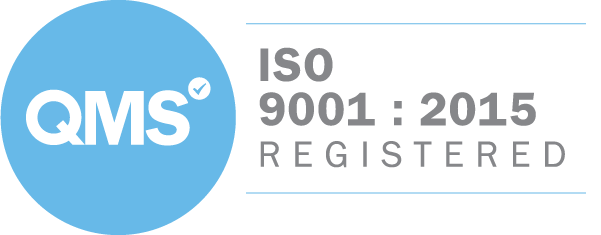CHANGES TO THE BUILDING REGULATIONS 2023
INFORMATION FOR DUTYHOLDERS
Background and what has changed
The Government has published amendments to the Building Regulations, which will apply to all applications for building control consent from 1 October 2023.
In addition, the Government has formed a new regulatory body within the Health and Safety Executive (HSE) called the Building Safety Regulator (BSR). The BSR will oversee many aspects of building safety, including Building Regulations and Building Control.
If you, or someone on your behalf, have submitted a building control application, you have new legal responsibilities from 1 October 2023 as a Client, Designer or Contractor. You must follow these legal procedures so that your building control application can be considered.
If you do not follow the procedures prescribed for your role, it will result in your application being rejected or reverted to local council control, which will require the same information.
What is your dutyholder role?
The following table identifies who you are prescribed in the new Part 2A Dutyholders and Competence. The diagrams that follow the table summarise your new legal duties and roles and what information your Approved Inspector needs from you throughout the processing of your application.

What are your duties?
| CLIENT is any person for whom a project is carried out. |
| You must: Ensure suitable arrangements exist to plan, manage and monitor the building work to ensure compliance with the Building Regulations.Ensure that these arrangements are maintained throughout the life of the project.Take all reasonable steps to ensure any designers or contractors appointed are competent to carry out the work for which they are appointed.Notify the Approved Inspector when you appoint Principal Designer and Principal Contractors, even if they are sole designers or contractors. Including:Name, address, telephone number and email of these parties.Details of any change in the dutyholders and the dates of their appointment.A signed statement of authority that the information is, to the best of your knowledge, correct.Let the Approved Inspector know when the building work is commenced. See notes below on what is deemed commencement.When the work is complete, you must provide notification to the Approved Inspector, which contains the following information:The Client’s name, address, telephone number and email address.The Principal Designer’s and Principal Contractor’s names, addresses, telephone numbers and email addresses.A statement that the building work is complete.A signed statement that, to the best of your knowledge, the building work complies with the building regulations.A signed statement from each Principal Designer and Principal Contractor that they have fulfilled their duties under the building regulations. The Approved Inspector cannot issue its final certificate without receiving these signed declarations. |
| DOMESTIC CLIENT is a client for whom a project is carried out which is not in the course or furtherance of the Client’s business (whether for profit or not). |
| You must: Ensure suitable arrangements exist to plan, manage and monitor the building work to ensure compliance with the Building Regulations.Ensure that these arrangements are maintained throughout the life of the project.Take all reasonable steps to ensure any designers or contractors appointed are competent to carry out the work for which they are appointed. However: The Principal Contractor or contractor must carry out these duties. Unless: The Client agrees that the Principal Designer can carry out these duties. |
| PRINCIPAL DESIGNER is usually the lead designer and is appointed under Regulation 11D (principal designer and principal contractor) to perform the duties of a Principal Designer. |
| You must: Perform all the functions listed within the Designer roll below, and, In addition, you must: Plan, Manage and Monitor the design work during the design phase.Coordinate all matters relating to design work to ensure that it will comply with the Building Regulations if building work is carried out.Ensure dutyholder cooperation.Ensure all designers coordinate their designs so that building work will be carried out following the designs and will comply with the Building Regulations.Ensure all designers comply with their duties.Liaise with the Principal Contractor.Have regard to comments from the Principal Contractor about compliance with the Building Regulations.Assist the Client in providing information to designers.Review the arrangements of any previous Principal Designer.Notify Building Control in writing, where applicable, that the work is being carried out on behalf of a Domestic Client. Where applicable, sign the declarations as referred to above in the Client’s duties when work is complete. |
| DESIGNER means anyone (including the Client, contractor or anyone else) who, during their business, carries out design work or arranges for or instructs anyone under their control to do so. |
| You must: Plan, manage and monitor design work so that if the building work were carried out, it would comply with the Building Regulations.Cooperate with the Client, designers, and contractors to the extent that if the building work were carried out, it would comply with the Building Regulations.Not start any design work unless you are satisfied that the Client is aware of the duties owed by the Client.Carry out design to ensure that if building work were carried out, the design it would comply with the Building Regulations.Provide sufficient information about the building’s design, construction and maintenance to allow the Client, other designers and contractors to comply with the Building Regulations.Consider any other design work and report any compliance concerns relating to the design compliance to the Principal Designers and Client.Must advise the Principal Designer or the Client whether any work they are designing is Higher-Risk building work. |
| PRINCIPAL CONTRACTOR is usually the main contractor and is appointed under Regulation 11D (principal designer and principal contractor) to perform the duties of a Principal Contractor where there is more than one contractor. |
| You must: Plan, Manage and Monitor the building work during the construction phase.Coordinate matters relating to building work to ensure the building work complies with the Building Regulations.Ensure cooperation amongst all dutyholders.Ensure all building work is coordinated so that it complies with the Building Regulations.Ensure contractors comply with their duties.Liaise with the Principal Designer as required.Have regard to comments from the Principal Designer concerning compliance with the Building Regulations.Assist the Client in providing information to contractors.Review the arrangements of any previous Principal Contractor.Notify Building Control in writing, where applicable, that the work is being carried out on behalf of a Domestic Client. Sign the declarations as referred to above in the Client’s duties when work is complete. |
| CONTRACTOR is any person (including the Client, but not a domestic client) who, in the course of a business, carries out, manages or controls any building work. |
| You must: Plan, manage and monitor the design work such that if building work were carried out following it, it would comply with the Building Regulations.Cooperate with the Client, designers and contractors to the extent that if building work were carried out following the design, it would comply with the Building Regulations.Not start any design work unless they are satisfied that the Client is aware of the duties owed by their duties.Ensure the building work they are carrying out complies with the Building Regulations.Provide each worker under their control with appropriate supervision, information and instruction to ensure the building work complies with the Building Regulations.Provide sufficient information about the work to allow the Client, other designers and contractors to comply with the Building Regulations.Consider other building works when you are only carrying out part of the building work and report any concerns relating to compliance to the Principal Contractor.Provide advice to the Principal Contractor or the Client on whether any work is Higher-Risk building work. |
Notification of Dutyholders
The Client must give notification to the Approved Inspector when they appoint a Principal Contractor (or Sole Contractor) or a Principal Designer (or Sole Designer)
The notice must be given to the Approved Inspector and include,
- The name, address, telephone number and email address of the Dutyholder (PC or PD or both).
- If the appointment is a change of Dutyholder (PC or PD or both), the name, address, telephone number and email address of the previous Dutyholder (PC or PD or both) and the date their appointment ended.
- If the notice is given on behalf of the client, a signed statement from the client that they agree to the notice being given and that the information in the notice is correct.
Where the client is a Domestic Client, the relevant notices must be given to the Approved Inspector by the PC or PD and include a statement that the notice is given on behalf of a Domestic Client.
What is deemed the commencement of work?
Notice before starting work and notice when work is deemed “commenced.”
To serve the Initial Notice, the client must advise the Approved Inspector of the date when it is proposed that sufficient work will have been carried out to deem the work as “commenced”.
Where work does not involve foundation or substructure works, the client must state what they consider will amount to 15% of the work described in the Initial Notice.
Work being deemed as commenced is,
- For the construction of a complex building,
- work is to be regarded as commenced concerning that building or the first stage of building work when the foundations supporting the building and the structure of the lowest floor level of that building (but not the other buildings or structures to be supported by those foundations) are completed.
- Where the work consists of (a) the construction of a building that is not complex or (b) the horizontal extension of a building,
- work is to be regarded as commenced when the sub-surface structure of the building or the extension, including all foundations, basement levels (if any) and the structure of the ground floor level, is completed.
- Where the work consists of any other building work, then work is to be regarded as commenced when the initial work is completed (“initial work” means the work set out in the initial notice, which the client considers amounts to 15% of all the work described in the initial notice)
After three years, the Initial Notice will automatically cease to have effect unless sufficient work (as above) has been carried out to deem the project commenced AND the client has given written notice to the Approved Inspector.
final certificate requirements
Compliance Declarations
Where work described in an Initial Notice is complete, the Client must give to the Approved Inspector notice to this effect. The notice must include,
- The name, address, telephone number and email address of the Client.
- The name, address, telephone number and email address of the Principal Contractor and the Principal Designer.
- A statement that the building work is complete.
- A statement signed by the client that, to the best of the Client’s knowledge, the building work complies with the Building Regulations.
- A statement given by each Principal Contractor for the work and each Principal Designer for the work signed by the person to which the declaration relates and includes,
- The name, address, telephone number and email address of that person
- The dates of their appointment
- Confirmation that they fulfilled their duties under the Building Regulations (see details of duties above).
You should note that the Approved Inspector cannot issue its Final Certificate without receiving the signed declarations detailed in the last two (black) bullet points above, as the Final Certificate requires the Approved Inspector to declare that they have received these signed statements.
Fire Safety Information
Regulation 38 requires information relating to fire safety to be passed on at the end of a project on all buildings to which the Regulatory Reform (Fire Safety) Order 2005 applies.
Under the Amendment Regulations we are required to make a statement on our Final Certificate confirming that we have received confirmation that Regulation 38 has been complied with.
You should note that the Approved Inspector cannot issue its Final Certificate without receiving confirmation that Regulation 38 has been complied with.

